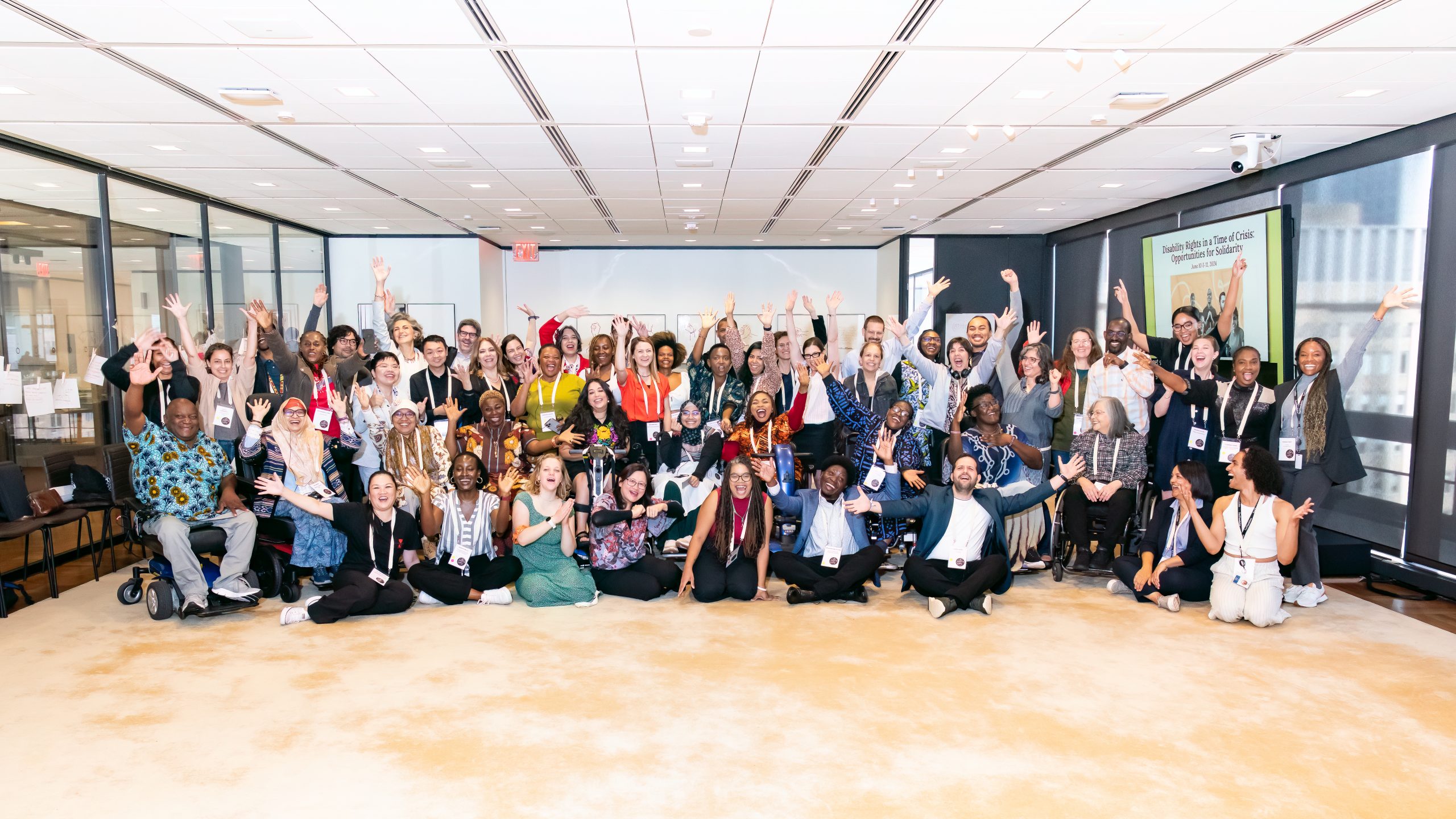I was recently at the global disability convening held at the Ford Foundation Centre for Social Justice. The goal of the convening was to bring together disability and non-disability organisations with an aspect of inclusion into a dialogue about building solidarity in a time of crisis. The objective of the convening was to foster relationship-building among the participants, deepen intersectional approaches and learning, and build transnational solidarity and partnerships to advance global disability rights.
Understanding Technology in the Context of Disability
In our discussion on technology and disability, we explored the integral role technology plays in modern communication and its recognition as a right essential for the enjoyment and protection of human rights, particularly disability rights.
International instruments and national laws increasingly highlight the importance of technology accessibility for persons with disabilities. While technology has significantly improved the lives of people with disabilities through innovations like assistive technologies, several challenges remain.
One of the most highlighted challenges is the exclusion due to cost, followed by usability. Looking at smartphones, for instance, lower-cost versions often lack accessible design features, and even when accessible options are available, users report not knowing how to utilise them effectively.
There were some privacy and security concerns. Online services often require assistance from trusted individuals, which can lead to exploitation. For example, visually disabled or persons with dexterity challenges may need help logging into online services, risking their privacy and security. In Kenya, most assistive devices, such as hearing aids, are imported. I have been compelled at times to concede to extensive data collection by companies which are not located in Kenya. Some of it included health data not related to the services provided by the device in order to continue receiving software updates.
Strategies for Enhancing Technology Inclusivity
To make technology more inclusive and accessible, we arrived at three key strategies.
Involving end users in Design: Tech will work better for diverse needs if we involve persons with disabilities in the design and development process of technology.
Human-Centric Usability Testing: Most usability tests for technology are technology-centric, with limited human involvement. Increasing the participation of persons with disabilities in these tests can lead to more user-friendly outcomes.
Implementing Existing Provisions: Many laws and regulations extensively support technology accessibility at national and international levels for persons with disabilities, but they have not been implemented.
Funding Beyond the Donor
This discussion focused on rethinking resource acquisition in disability advocacy. As the fundraising system evolves rapidly, it’s essential to adapt by questioning current methods and seeking new strategies at global, regional, and local levels.
One way to do this is by expanding the concept of resources. Money is often seen as the primary resource, but it’s not the only one. We need to recognise and leverage other assets like allies, information, community support, and a sense of belonging. Money remains crucial, but we must also map out and utilise non-monetary resources to drive disability initiatives.
People with disabilities have a history of hacking systems out of necessity. This adaptability should be embraced and utilised in fundraising and resource management. The varied experiences within disability movements furthermore influence the way we raise funds. Understanding and accommodating these differences is key to effective project funding.
Non-disability organisations are encouraged to incorporate disability considerations into all funding matters. Disability is an essential aspect of all issues, ranging from technology and gender to climate change. We should advocate for the inclusion of disability in general funding allocations rather than treating it as a separate category.
Increasing the presence of disability in media, sports, and pop culture can significantly enhance funding and sustainability efforts. This visibility fosters greater awareness and support, making it a crucial component of advocacy.
Moreover, it is vital to have more people with disabilities in positions where financial decisions are made. This representation should extend beyond activist spaces to include boards and committees that control funding. Ensuring that people with disabilities have a say in financial decisions can lead to more inclusive and effective funding strategies.
Flexible funding models are essential for supporting organisations and activists broadly rather than focusing solely on specific projects. Impact investment and trust-based funding can provide the flexibility necessary for innovation and strategic adaptation, enabling advocates to respond to evolving needs and opportunities.
Funders who are already committed to disability funding should share their knowledge and influence others to support disability initiatives. Collaborative efforts among donors can amplify the impact of funding and drive more comprehensive support for disability rights.
There is currently a debate about how disability funding should be presented. Some people argue that it should be framed in terms of human rights and justice, while others believe it should be linked to capitalist benefits such as increased GDP or productivity. Both approaches have merit, and finding the right balance is crucial for effective advocacy. Balancing these perspectives can help secure broader support and ensure that funding strategies are both just and pragmatic.
![]()




